QuestionQUESTION: Hello Diane,
my question, is it worth trying to force feed a gecko or should I let Nature take its course?
Sally, our family Leopard Gecko is now 14 years old. We got her from a private breeder as a baby and she was doing well until this past winter season.
From day one she has her terrarium with heat stone under a 'cave', water dish, pebbles as her potty area.
She always is being fed in a separate plastic cage, changing diet of small (dusted) crickets, which are fed with fresh veggies and fruit, small mealy worms, wax worms, and whatever I find doing yard work, usually grubs.
Starting November 07, she stopped eating. Since this happens every year, we did not worry too much, but waited for her usual shedding. Well, she keeps shedding, and not eating. She is now really thin. We keep a feeding log (yes, for 14 years) and she now eats only on average every 14 days 3 waxworms. She doesn't even look at the mealy worms, she goes into hunting mode with the crickets, sniffs them and turns away, and the grubs she bites and lets go again.
I am trying soakings in handwarm water, and rubbing her tummy.
She does not regurgitate, and if she poops it looks normal.
Should I try to force feed her, if so, how do I do this without hurting her?
Thank you much for your help.
Sincerely,
Evelyn
ANSWER: Hi Evelyn,
A few things pop into my mind...
1.possibly a partial blockage(ate a pebble) or from parasites..(from wild caught insects)
2. possible toxic reaction from insects from the yard. With insects from yards, even though we know we don't use any chemicals, etc in the yard, we don't know where the insects were before they came into our yard.
With leos, they say 15-20+ years...with the higher being the more normal with good care.
I'm not a fan of any heat rocks as they can and do malfunction causing burns...or too hot of temperature on the surface. Double check the temperature directly on it..and in the cave. Warm area should be in the 88-92 degree range...if too hot, her belly may be overworking and the food she does eat is digesting too fast which she will not get the nutrition. If temperatures are too low, food digests too slow and again, nutrition is lost.
Do you coat the insects with any vitamin powders or calcium? If yes on calcium, is it with a D3 calcium? D3 should be used to dust insects a few times a week. Calcium should not contain any phosphorus... their diets contain enough and too much will cause problems.
You can try some baby food chicken. Most leos will lick at it especially if put on the end of their snout(careful of her nostrils)
Personally, If everything is correct with temperatures, etc and she won't eat the baby food, then I would get her to a vet to see if it is a kidney problem, toxic problem, parasite problem, or a nutritional problem, To find a vet that can treat reptiles:
http://www.arav.org/Directory.htm
http://www.anapsid.org/vets/
Also, you might want to try a gut boost ...
bene bac...labeled for birds, approved for reptiles.
nutri bac
acidolophliz+
or plain, human grade acidophilus..... one capsule will dose for at least 3 days in a row.
BeneBac ..most larger pet stores should carry it...especially if they have birds...
Acidophiliz+ I think PetsMart carries it..if not....on line at www.reptilesupply.com
Some people use a tiny amount(1/4 cc or less) of live culture plain yogurt for 2-3 days, but this is only something that is recommended for healthy reptiles.
The reason for one of the above products is to replace the gut bacteria(probiotics) which are needed for digestion.
These products can be mixed with the baby food.
If, this is the "end of life" for your gecko, I don't recommend allowing nature to take its course...that can be a very slow, painful process to both you and your leo. Euthanasia by a vet is the humane way to do so.
Hope this has helped you and your leo out...
---------- FOLLOW-UP ----------
QUESTION: Thank you so much Diane, for your fast reply.
I checked the temperature of the heat stone by touching it with a baby thermometer and it registered with 107 F. That would explain why Sally just either has her head on it or her tail end.
Room temperature is always between 79 and 83 F. A little cooler at night.
Please let me know of your preferred heat source and I will go and get it right away.
We are using vitamin powder to dust the crickets, never knew about the Calcium. This, too, will be bought right away.
And tonight I will try the chicken babyfood.
I also found a close by vet on your recommended list.
Thanks again for your help
Sincerely,
Evelyn
AnswerHi Evelyn,
Glad to hear you have a vet close by..thats great!
I'm including a basic care sheet that I wrote to help people out caring for their leos. In it you will see my recommendations on heating, temperatures, etc...
BASIC CARE FOR A LEOPARD GECKO
Leopards are pretty easy to care for but they do need
special care. Here are some of the basic needs of your gecko.
HOUSING: The need to have at least a 20 gallon long tank for one Leo. This needs to have a secure fitting screen top...they can be quite the escape artists!!! They need to have a humid hide box.You can make this with something as simple as a small plastic dish with a hole cut in one side and a small mesh bag filled with some Sphagnum moss coconut bark or Peat moss that you mist.
I made mine out of the small plastic folgers coffee containers...I cut an opening in the lid..and put the moss in..they LOVE it. I use the terrarium moss in mine.
I use that on the warm side of the tank. Be sure to provide a cool hidebox on the other end. I also provide a mid temperature hide...which is in the middle of the tank.I use the critter caves which you can purchase. NOT the ones that have heat in them!!!!
Provide secure climbing areas for your gecko. Fake plants, rocks and branches are all fine to use. be sure there are no wires or sharp ends to any fake plants you use.
*****SUBSTRATE:(that's the stuff on the floor of your tank) Newspaper, lizard carpet or paper towels work great and are easy to clean and are much safer than any loose substrate. Sand or other loose substrate is not recommended as that they can be deadly to the leo when it is ingested(eaten, even by accident while eating their insects)...A very graphic site of an impacted leo surg can be seen at http://homepage.mac.com/exoticdvm/reptile/PhotoAlbum181.html it is very graphic!!! ******What I have found that works great for safety and heat distribution is using about 1/4 inch of childrens play sand(since the tiles fit tight together, there is no sand danger) on the bottom of the tank and on top that you place ceramic or slate floor tile. What is nice is that the 12 x 12 squares fit perfect in a 20 gallon tank with no spaces between the tiles. The sand and the tile distribute the heat wonderfully. Using the under tank heater as described is what distributes the heat. Also, overhead heat will help in heating the tiles...I've been using this set up for several years and the leos love it. Using a tile that isn't smooth is recommended. **********
TEMPERATURES: They need a warm area of 88-92 degrees and a
cooler area in the upper 70s, low 80s. At night their temperature can drop to the low to mid 70's.
Never use a hot rock for a leopard gecko...or any reptile.
They can severely burn any reptile. You can use a heating
pad under the tank,under tank heater, or you can use a regular household lightbulb in a dome fixture with a ceramic socket in it to keep the warm area at the 88-90 degree area.At night, no white light. If room temperatures stay above 70 degrees, no extra night heat is needed. The undertank heater or heating pad should cover about 1/3 of the tank....be sure to raise the tank up about 1/4-1/2 inch off the stand when using an undertank heat source to prevent heat build up which can cause the glass to break and hot spots in the glass. Be sure to have a good layer of newspaper, carpeting or, even a thin flat rock(such as tile) on top the area that the undertank heat source is placed...if you use a thin rock or tile, it helps to distribute the heat very well.
You can use the special nighttime lights that are designed for reptiles. I like using a ceramic heat emitter on a thermostat for nighttime heat.
DO NOT use black lights or party lights as they can cause eye damage!!!!
The wattage you use will vary based on room temperature and size of tank.
LIGHTING: Leopard geckos do not need UVB lighting but it does not hurt them to give them uvb. They should have some type of light during the day, be it a uvb tube, regular florescent light, reptile day light or regular household lightbulb. NO white lights at night!!!
FEEDING: Geckos should not be fed crickets or other insects that are bigger than the space between their eyes. Generally, hatchlings can be fed more than once a day,juvys can be fed twice a day, adults are fed once daily or every other day, in the early evening. Crickets and other food items such as silk worms, super, and an occasional treat of a wax worm, need to be dusted with a calcium supplement two times a week and also they should have a small dish of calcium in their tank. I use the lid of a milk jug for the little dish of calcium in their tank. For dusting the insects, Use a calcium with no added phosphorus. Insects must be gut loaded(fed) for at least 48 hours prior to feeding your gecko. Remove any uneaten crix or superworms after 15-20 minutes..... Place a piece of cut potato in the tank so that if you have missed any uneaten insects, they will eat the potato instead of nibbling on your gecko!!!
*************You have to be sure to feed your crickets and insects the right foods before feeding them to your gecko. If your crickets/insects are not healthy and well fed, your gecko will not get the nutrition he needs. You can gut load your crickets and insects greens, veggies, cereals or specially designed commercial foods for crickets or the insects you are feeding. ************
Be sure to have a small dish of clean water for your gecko at all times!!
You can offer them some baby food or fruits on occasion ...
Mine will even eat a small piece of watermelon now and then.WATER: always provide a dish of drinking water. If you choose to mist your gecko to drink, its best to not get the tank too wet as that they do not do well with higher humidity. Sometimes its better to take your leo out of their tank to mist them to get them to drink!!!
HANDLING: Some geckos enjoy being held...others prefer not to be handled at all. Be sure to be very gentle when holding your leo and NEVER grab them by the tail! Their tails are extremely fragile and will break.
I do suggest finding a vet that can treat reptiles BEFORE you actually need one!!! To find a vet that is able to care for reptiles:
http://www.anapsid.org/vets
http://www.arav.org/Directory.htm
For more information on leopard geckos:
http://www.thegeckospot.com/leocareindex2.html
http://www.drgecko.com
If you have any questions or don't understand something, please let me know.

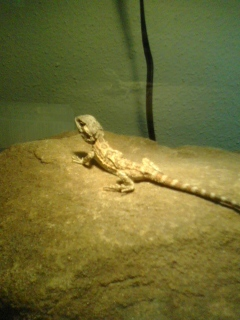 My baby bearded dragon wont eat...
QuestionSandfire
QUESTION: Hi there,
I just got
My baby bearded dragon wont eat...
QuestionSandfire
QUESTION: Hi there,
I just got
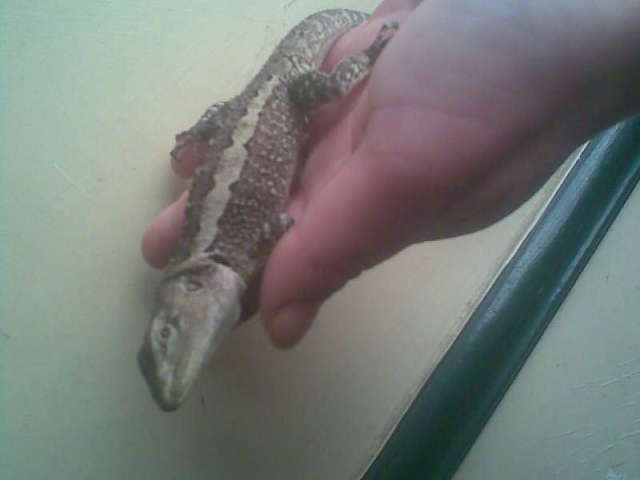 new striped water dragon.?
QuestionQUESTION: i got ur reply about the parasites an
new striped water dragon.?
QuestionQUESTION: i got ur reply about the parasites an
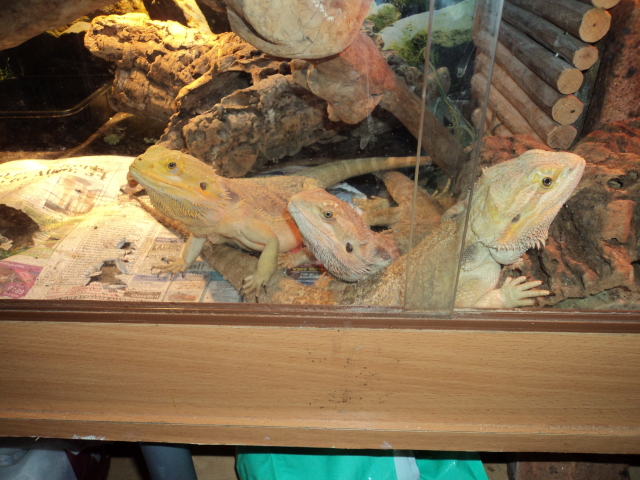 i need advise asap emergancey!
Question
koche ant the 2 girls
i have a 5 year old male
i need advise asap emergancey!
Question
koche ant the 2 girls
i have a 5 year old male
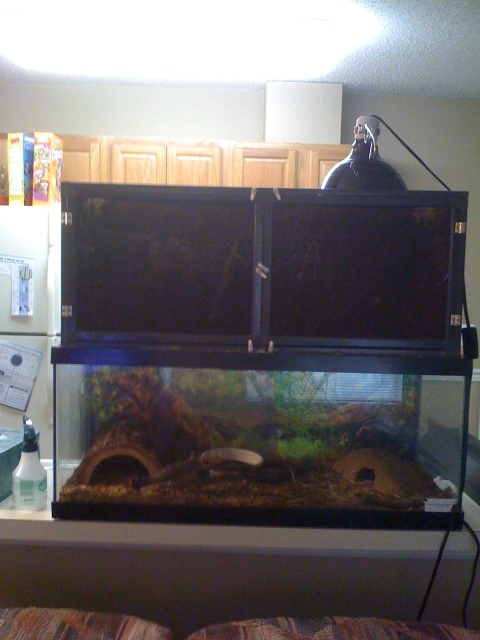 Heating/Lighting
QuestionQUESTION: I recently moved my Ball Python to a
Heating/Lighting
QuestionQUESTION: I recently moved my Ball Python to a
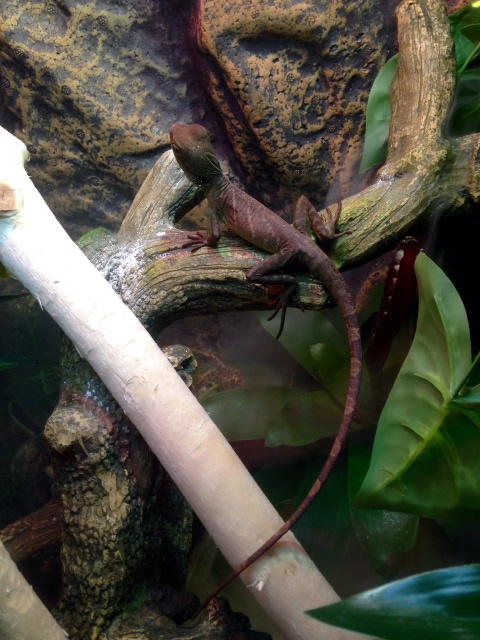 CWD mixed info
Question
PASCAL Enclosure
Hello Tracie,
I
CWD mixed info
Question
PASCAL Enclosure
Hello Tracie,
I